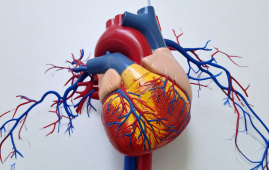

A study team from the University of Rochester is describing a novel “liquid biopsy” technique for cancer cell detection that is intended to be easier, quicker, and more informative than existing techniques.
A liquid biopsy: what is it? It is a non-invasive test that looks for cancer cells or other chemicals generated by tumors using blood, urine, and other body fluids. A liquid biopsy can be used to test for or identify cancer, track the disease’s course, and track the body’s reaction to cancer treatment.
James McGrath, PhD, the William R. Kenan Jr. Professor of Biomedical Engineering at UR and a member of the Wilmot Cancer Institute scientific team, spearheaded a cooperation to create a technique for collecting biological material (genes and proteins) known as extracellular vesicles. Selecting and studying EVs yields useful information about disorders in the body.
Despite the excitement and long-standing potential in this subject, the challenge has been determining the optimal method for analyzing the “bioactive cargo” in EVs and developing an accurate biopsy tool.
Researchers describe present approaches as costly, difficult, and limiting because they do not allow scientists to study several biomarkers at the same time.
The UR imaging-based technique uses a digital approach and has been shown in preliminary testing to be more sensitive as it sorts hundreds of thousands of EVs. Researchers think it can detect cancer at earlier, more treatable stages and shed light on the role of EVs in cancer spread and immune system response.
Their findings are published in the nanoscience and nanotechnology journal Small, with Samuel Walker, a biomedical engineering student, serving as the first author.
Furthermore, Jonathan Flax, MD, a research assistant professor in Urology, and Scott Gerber, PhD, associate professor of Surgery and cancer investigator at Wilmot, are working together to identify EV-based biomarkers that can be used to determine whether immunotherapy is effective against cancer.
Future plans include using the new tool in clinical research to guide results of treatment-based clinical trials, McGrath said.
more recommended stories
 Protein Pair Guides Chromosome Alignment in Mitosis
Protein Pair Guides Chromosome Alignment in MitosisKey Points A joint research team.
 Intensive mind-body retreat rapidly alters brain function
Intensive mind-body retreat rapidly alters brain functionAn intensive mind-body retreat combining meditation,.
 Cholesterol-Lowering Drugs May Help Reduce PFAS Levels
Cholesterol-Lowering Drugs May Help Reduce PFAS LevelsPer- and polyfluoroalkyl substances (PFAS) continue.
 Citrus and Grape Compounds Help Prevent Type 2 Diabetes
Citrus and Grape Compounds Help Prevent Type 2 DiabetesA new clinical trial highlights the.
 Personalized Pain Care Transforms Parkinson’s Treatment
Personalized Pain Care Transforms Parkinson’s TreatmentNew UniSA research underscores the urgent.
 Genetic Diversity Explains Obesity Risk Differences
Genetic Diversity Explains Obesity Risk DifferencesCross-ancestry Study Identifies Novel Obesity Genes.
 Meniscal Tear and OA Pain Improved by Home Exercise
Meniscal Tear and OA Pain Improved by Home ExerciseHome Exercise Proves Effective for Knee.
 AI ECG Model Outperforms Standard STEMI Triage
AI ECG Model Outperforms Standard STEMI TriageNovel AI ECG Model Outperforms Standard.
 New Software Transforms Real-Time Pathogen Surveillance
New Software Transforms Real-Time Pathogen SurveillanceReal-Time Pathogen Surveillance Software Transforms Environmental.
 Bright Nights May Increase Stroke, Heart Failures in Adults
Bright Nights May Increase Stroke, Heart Failures in AdultsBright Nights are tied to increased.

Leave a Comment